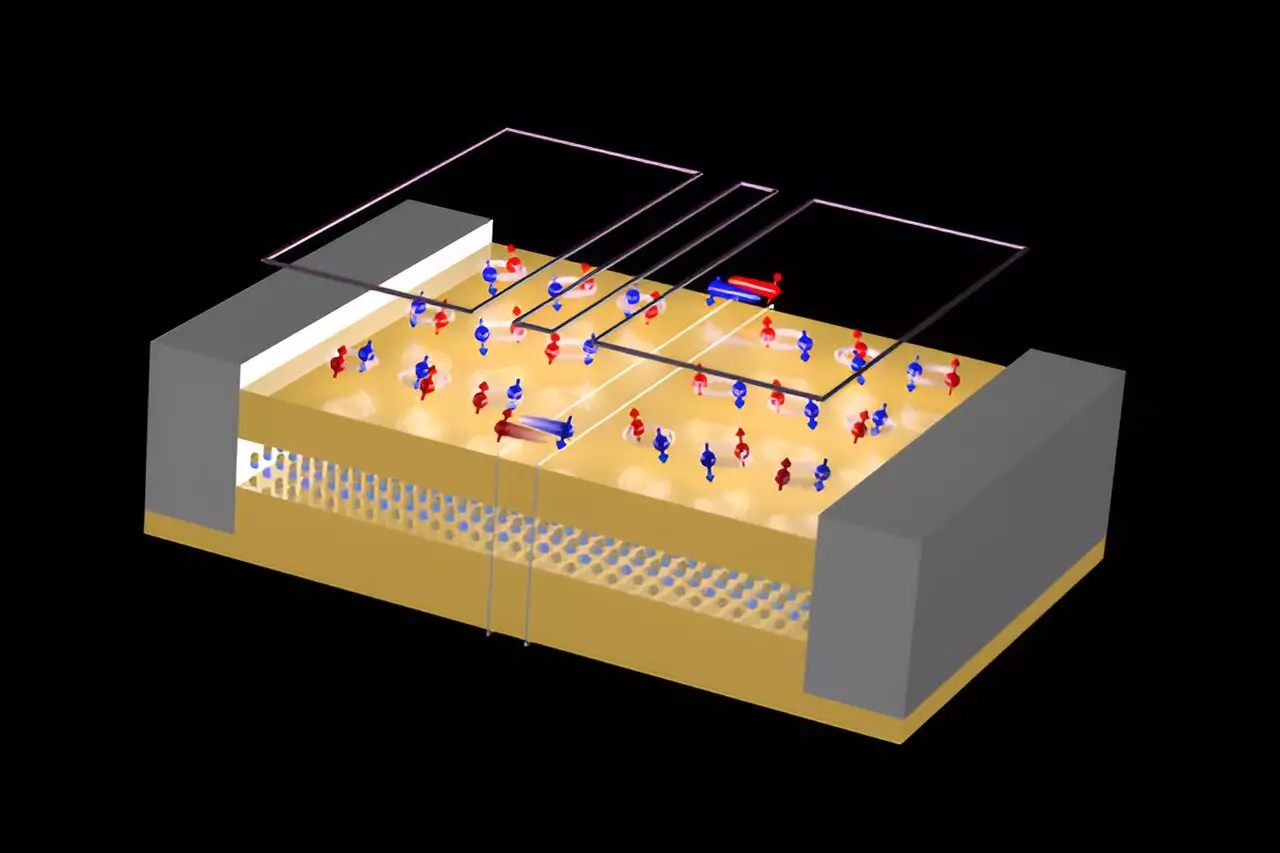The field of quantum computation holds great promise for revolutionizing how we process and store information. One of the key challenges in this field is finding suitable materials that can host and manipulate quantum states. Physicists at RIKEN have recently made an exciting breakthrough by developing an electronic device that hosts unusual states of matter, which could one day be useful for quantum computation.
When a material exists as an ultrathin layer, just one or a few atoms thick, it exhibits entirely different properties compared to its thicker counterparts. The confinement of electrons to a 2D plane gives rise to exotic states, making such materials promising for harnessing new phenomena in electronic devices. These states include quantum spin Hall insulators, which conduct electricity along their edges but are electrically insulating in their interiors. Coupled with superconductivity, these systems have the potential to engineer topological superconducting states for use in future topological quantum computers.
Josephson junctions, typically made by sandwiching a material between two elemental superconductors, play a crucial role in quantum computation. In this study, Michael Randle and his team at the RIKEN Advanced Device Laboratory, together with co-workers from RIKEN and Fujitsu, created a 2D Josephson junction entirely from a single crystal of monolayer 2D tungsten telluride. Tungsten telluride is known to exhibit both a superconducting state and a quantum spin Hall insulator state.
What sets this research apart is the fabrication process used by the team. Rather than using traditional methods, they exploited tungsten telluride’s ability to be tuned into and out of the superconducting state using electrostatic gating. By using thin layers of palladium to connect to the sides of the tungsten telluride layer surrounded and protected by boron nitride, they were able to observe an interference pattern characteristic of a Josephson junction with 2D superconducting leads.
While this study provides a framework for understanding complex superconductivity in 2D systems, there are still challenges to overcome. Tungsten telluride is notoriously difficult to process into devices due to rapid oxidization within minutes of its surface under ambient conditions. Hence, all fabrication needs to be performed in an inert environment. The next step involves the implementation of ultraflat pre-patterned gate structures, which could potentially overcome the oxidization hurdle.
The development of this 2D Josephson junction with active components entirely from a quantum spin Hall insulator material opens up new possibilities in the field of quantum computation. The unique properties of 2D materials, coupled with their compatibility with existing semiconductor technologies, make them highly promising for harnessing quantum phenomena in electronic devices. While challenges remain, this research provides a stepping stone towards the realization of topological quantum computers capable of solving complex problems beyond the reach of classical computers. The future of quantum computation is bright, and 2D materials are poised to play a critical role in this transformative technology.


Leave a Reply